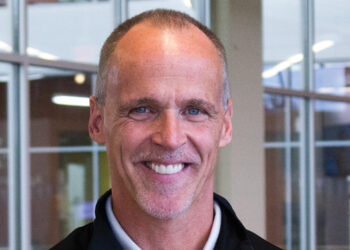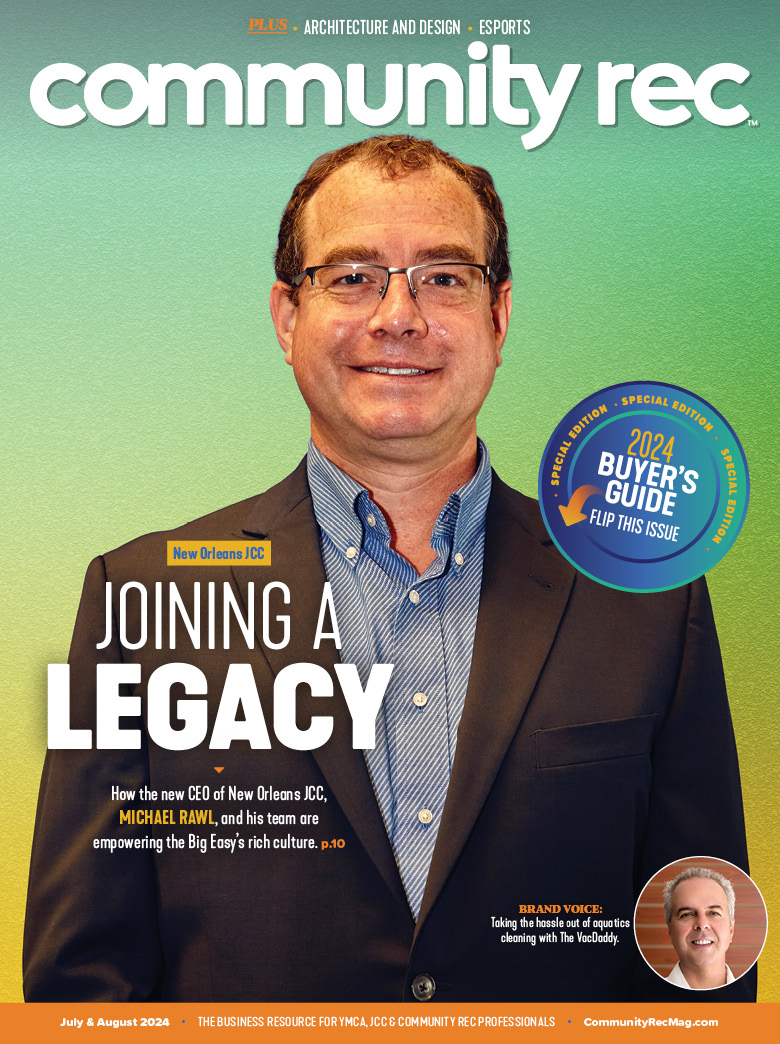Facility designs and capital projects making waves in the industry.
What first began as an ambitious idea is now set to redefine the community of downtown Vancouver, British Columbia.
The project — known as JWest — is an initiative led by the JCC of Greater Vancouver to redevelop the current JCC. The plan is to address issues impacting the neighborhood and region such as expanded childcare spaces, rental and affordable housing, and stronger senior services.
Once the new JCC is constructed, the current building will be demolished and modern community amenities — including two rent-affordable towers — will be built. Eldad Goldfarb, the executive director of the JCC of Greater Vancouver, said the development will be the new heart of Jewish life in the city where multiple generations from all backgrounds will be able to connect and live.
“There are so many different aspects to this project,” said Goldfarb. “It’s for the middle class as the middle class cannot afford to live in Vancouver anymore. We’re developing this project on a JCC site, but it’s much bigger than a JCC — it’s going to be a hub for community nonprofits. We saw this as an opportunity to involve others and to impact the community through various organizations. We have about 20 partners. It’s kind of unprecedented. It’s hard work but it’s worth it and brings the community together.”
The projected reach of JWest has enabled both the provincial and federal government to provide $50 million for the development. Over $58 million of the project’s $161 million philanthropic goal has also been funded. The estimated project cost is over $450 million.
Goldfarb said they first began working with a government relations consultant to navigate the system. JCC officials also had monthly meetings with elected officials and bureaucrats to present the plan.
“People ask me how JWest was able to receive so much investment from the government,” said Goldfarb. “The real answer is the project speaks for itself. It combines so many things governments want, and we are fortunate to be able to provide these things in a very expensive region where affordability is a real issue. Because of its promise, private donors and foundations are willing and considering much larger donations than they have before.”
Having a strong idea in the planning stages is a running thread in successful developments across the industry. This is also seen at the North Scott YMCA in Eldridge, Iowa. The organization recently opened its new 44,000-square-foot facility to the public in late 2022.
Brad Martell, the president and CEO of the YMCA of the Iowa Mississippi Valley, said the development had been in the works since 2014 and became a reality thanks to collaborating with the North Scott School District and the city of Eldridge, Iowa.
“The school district was interested in building a competition pool for their swim team. We started talking about how much it would cost to build it, and from there we thought it would be good to get the city involved,” said Martell. “The first thing we needed to do was a market study. The study was right on the bubble. We were very transparent about what we wanted to do, and we got really good feedback. We tested different locations as part of the survey as well. From there, we decided to do a bond. Then we took the next step and put it to a vote.”
The project received a total of $14 million from the school district and the city. Despite opening six months late due to supply chain and labor force issues, Martell said they fundraised $750,000 to furnish the building, which included Precor fitness equipment.
The market study found the quality of the aquatics area ranked high with the community. To meet the need, the facility now includes a six-lane competition pool, a water therapy pool and a separate pool for children. Martell said GRO Architects, PLLC based in New York designed the layout of the new Y.
The JCC of Greater Vancouver similarly planned for vast improvements to its aquatics area because the current swimming pool isn’t large enough to host swim meets. Leading the design of the JWest project is Acton Ostry Architects.
“This is a once-in-a-lifetime opportunity to think outside of the box,” said Goldfarb. “Most of our programs are suffering from lack of space right now. It’s about thinking long-term and about where we want to focus. What is the best return on investment both financially and community-wise?”
Capital projects can also be smaller in scope. For example, the Wichita Falls YMCA used funding to construct a new esports lounge and redesigned childcare spaces into tiny towns. The projects were installed by Lilliput Play Homes and PC Pros.
AJ Hernandez, the president and CEO of the Wichita Falls YMCA, said the Y wanted to maximize the ROI on spaces to focus on family membership. By focusing on family memberships, they can intentionally provide experiences for all ages of a member. This strategy resulted in total association revenue increasing 200% in two years.
“Our tiny towns took a full fundraising approach with each building being sponsored for the full cost,” said Hernandez. “We raised roughly $10,000 per building for a total of eight in each tiny town. Other spaces were a combined effort of utilizing funding to add new and exciting sources of activity which increased membership growth and retention.”
As for the esports lounge, Hernandez said the Y really wanted to create an open, spacious and updated environment to provide membership usage, leagues, tournaments and outside groups.
But regardless of the size or type of project at hand, Hernandez challenged other organizations to be unique with how they utilize operational nets.
“It looks great to maximize net on a bottom line at the end of a year, but as you’re looking at long-term sustainment, you have to provide a quality space,” he said. “We want to make a YMCA membership so valuable to a family that it becomes indispensable. That’s the goal.”
Photo courtesy of North Scott YMCA.











